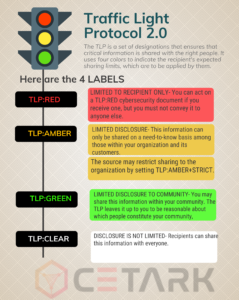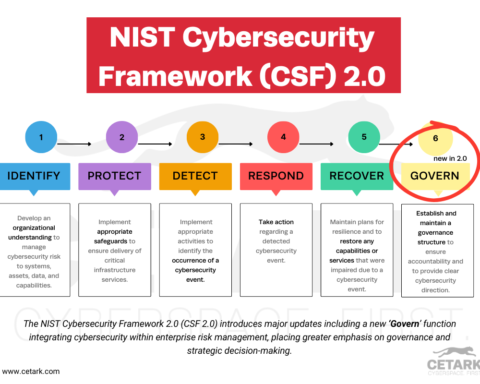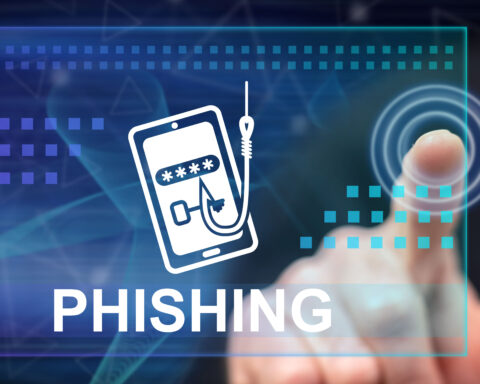Five years after the debut of the original version, the Forum of Incident Response and Security Teams (FIRST)unveiled TLP 2.0, a new version of its Traffic Light Protocol (TLP) standard. TLP is used by computer security incident response teams (CSIRTs) to help promote information sharing among groups worldwide.
What Is The Traffic Light Protocol TLP, And What Are Its Benefits For Cybersecurity
The Traffic Light Protocol (TLP) is a standard developed by the Forum of Incident Response and Security Teams (FIRST) to help promote information sharing among computer security incident response teams (CSIRTs).
TLP provides a consistent, structured approach for labeling the sensitive information shared during an incident. This allows CSIRTs to quickly and easily identify the appropriate level of handling for information shared by other teams.
TLP is flexible and can be used in various incident response scenarios. For example, TLP can be used to determine how information should be shared during a malware outbreak or when responding to a data breach. TLP can also help identify which information should be shared with law enforcement or third parties.
TLP is an essential tool for CSIRTs because it helps ensure that sensitive information is not inadvertently disclosed. This can help protect the privacy of individuals and prevent damage to a company’s reputation*. TLP can also help *avoid legal liabilities associated with disclosing sensitive information.
The new features of Version 2.0 make it more effective in protecting networks from cyberattacks.
-TLPs are four distinct labels assigned to the recipients by the sender.
The four TLP labels are:
RED,
AMBER,
GREEN,
and CLEAR.
They MUST NOT contain spaces and SHOULD be in capitals in written form. TLP labels must remain intact even if used in other languages; contents may be translated but not the labels.
– The TLP:CLEAR label replaces the TLP:WHITE label and adds a level of disclosure, TLP:AMBER+STRICT.
– Human readability is improved by removing synonyms and colloquialisms. The improved human readability of Version Two Zero will also help reduce confusion and ensure everyone is on the same page regarding sharing information.
– Definitions are provided for community, organization, and clients. The definitions for community, organization, and clients will help ensure everyone knows who can access what information.
*- And the colors table included with the new version will make it easier to understand the different TLP labels.
TLP Version Two Zero offers better protection against cyberattacks by providing a more standardized way of handling information sharing within an organization. FIRST responders can use the new TLP:CLEAR label to indicate when data can be shared outside the organization. In contrast, the TLP:AMBER+STRICT label can restrict information sharing to only those who need to know within the organization.
This will help reduce the chances of sensitive information being leaked accidentally or maliciously.
How to Use Traffic Light protocol 2.0 in Transmitting Sensitive Information
in messaging and email systems
To use TLP Version Two Zero, you must update your organization’s messaging and email systems. This can be done by adding the TLP:CLEAR and TLP:AMBER+STRICT labels to your organization’s message header fields. For example, in an email system, you would add the following areas to the header of each message:
To: user@example.com
TLP: CLEAR
Subject: This is a test message
The To field indicates who the message is for, while the TLP field indicates that the message can be shared with anyone. The Subject field contains a brief description of the contents of the message. By adding these fields to your organization’s messaging and email systems, you can use TLP Version Two Zero to protect sensitive information.
TLP Version Two Zero is a valuable tool for protecting sensitive information. Updating your organization’s messaging and email systems can help ensure that information is only shared with those who need to know. This will help reduce the chances of sensitive information being leaked accidentally or maliciously.
How to use TLP in documents
To use TLP in documents, you will need to add the appropriate TLP label to the header of each document. For example, if you are sharing a copy with someone outside of your organization, you would add the following field to the title:
TLP: CLEAR
If you are only sharing the document with those who need to know within your organization, you would add the following field to the header:
TLP: AMBER+STRICT
By adding the appropriate TLP label to the header of each document, you can help ensure that sensitive information is only shared with those who need to know. This will help reduce the chances of sensitive information being leaked accidentally or maliciously.
Conclusion:
We are confident that the new and improved Traffic Light Protocol will help improve communication and coordination among cybersecurity professionals and ultimately help protect our critical infrastructure. We encourage all organizations to adopt the TLP protocol into their security programs.
Thank you for reading! If you have any questions or comments, please feel free to reach out to us.







